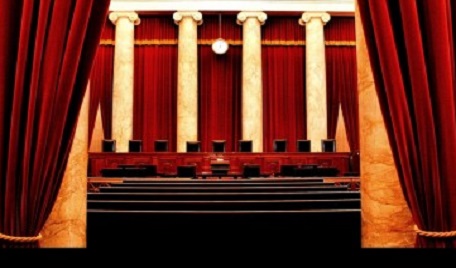Do you know when an alpha amino acid polymer qualifies as a “protein” regulated by the Food and Drug Administration? Or do you know how much noise is consistent with the “natural quiet” required for aircraft flights over the Grand Canyon, which is regulated by the Federal Aviation Administration? Most people probably don’t know, but the U.S. Supreme Court recently said courts, not expert federal agencies, do know.
 The protein and noise questions are true examples of the kinds of questions courts face when federal regulations are challenged in court. For four decades, courts have followed a Supreme Court decision that was a roadmap of how to proceed when confronted with ambiguous agency regulations or statutes. Last week, the Justices jettisoned that 1984 precedent in a 6-3 ruling in Loper Bright Industries v. Raimondo.
The protein and noise questions are true examples of the kinds of questions courts face when federal regulations are challenged in court. For four decades, courts have followed a Supreme Court decision that was a roadmap of how to proceed when confronted with ambiguous agency regulations or statutes. Last week, the Justices jettisoned that 1984 precedent in a 6-3 ruling in Loper Bright Industries v. Raimondo.
The 1984 precedent, commonly known as Chevron, set out a two-step test for courts when reviewing an agency’s ambiguous law. (The decision is formally known as Chevron U.S.A., Inc. v. Natural Resources Defense Council, Inc.)
First, courts asked if Congress had “directly spoken to the precise question at issue?” If a court, using traditional tools of statutory construction, determined that Congress’ intent was clear, that intent had to be given effect. But if a law was silent or ambiguous, a court had to decide whether an agency’s action was based on a permissible, reasonable interpretation of the statute, and if it was, that court had to defer to the agency.
As Justice Elena Kagan wrote in her dissent in Loper, the Chevron “rule has formed the backdrop against which Congress, courts, and agencies—as well as regulated parties and the public—all have operated for decades. It has been applied in thousands of judicial decisions. It has become part of the warp and woof of modern government, supporting regulatory efforts of all kinds—to name a few, keeping air and water clean, food and drugs safe, and financial markets honest.”
Kagan, joined by Justices Sonia Sotomayor and Ketanji Brown Jackson, also said, “And the rule was right.” Her six conservative colleagues, led by Chief Justice John Roberts Jr., disagreed.
After 40 years and thousands of cases, why was Chevron now wrong?
The Chevron decision had been a target of the business and conservative legal communities for years. They claimed it was responsible for the growth of the regulatory state and overreaching by federal agencies. Although once supportive of Chevron, they now believed they would fare better when challenging regulations by looking to courts as sole decisionmakers.
Some of the conservative justices also have been critical of Chevron. During oral arguments in Loeper, Justice Neil Gorsuch said Chevron means “government always wins.” But Justice Jackson rejoined that Chevron also protected courts from becoming unaccountable policymakers.
Still, Roberts had two main reasons why the decades-old decision was wrong. He began by pointing to Article III of the Constitution which gives to the Federal Judiciary the responsibility and power to adjudicate “Cases” and “Controversies”—concrete disputes with consequences for the parties involved. He said the Framers envisioned that the final “interpretation of the laws” would be “the proper and peculiar province of the courts.” And, he noted the great Chief Justice John Marshall who, in Marbury v. Madison, declared, “it is emphatically the province and duty of the judicial department to say what the law is.”
After recounting much history of the growth of administrative agencies and judicial review, Roberts arrived at the Administrative Procedure Act of 1946 (APA) which, among other things, speaks to the contours of judicial review of agency actions. A court, Roberts wrote, was to decide all relevant questions of law, interpret constitutional and statutory provisions, and determine the meaning or applicability of the terms of an agency action.
The text of the APA, he added, means what it says: agency interpretations of statutes—like agency interpretations of the Constitution—are not entitled to deference. Chevron was inconsistent with the APA and the traditional understanding of what courts do. Agencies, Roberts said, have no special competence; courts do. He also said Chevron was unworkable, among other problems, and did not deserve respect as a precedent under the doctrine of stare decisis.
Justice Kagan and the other dissenters, disagreed fundamentally with Roberts. “Congress knows that it does not—in fact cannot—write perfectly complete regulatory statutes,” Kagan wrote. “It knows that those statutes will inevitably contain ambiguities that some other actor will have to resolve, and gaps that some other actor will have to fill. And it would usually prefer that actor to be the responsible agency, not a court.” Agencies have expertise in technical and scientific areas, she said, adding courts do not.
“In one fell swoop, the majority today gives itself exclusive power over every open issue—no matter how expertise-driven or policy-laden—involving the meaning of regulatory law.”
The Supreme Court itself has not applied Chevron since 2016, but the real impact will be felt in the lower courts. Chevron undergirds an estimated 17,000 lower court decisions that cut across a broad swath of federal regulations affecting numerous aspects of our lives.
The overturning of Chevron was the third major decision this term reining in federal agencies’ power. The court has been engaging in that effort with vigor and success ever since the three Trump appointees joined the court. This term is unlikely to be the last one in which the conservative majority sets its sights on the administrative state.
Marcia Coyle is a regular contributor to Constitution Daily and PBS NewsHour. She was the Chief Washington Correspondent for The National Law Journal, covering the Supreme Court for more than 30 years.







